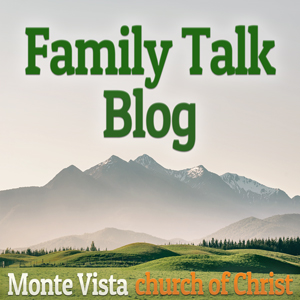Around the two-room tent that protected the Ark, Golden Altar, Lampstand, and Table of Shewbread was a courtyard approximately 150 feet by 75 feet. The fabric walls and gate of this courtyard enclosed a place, separated from the world, where the worship of God could be carried out by the priests sanctified to His service. The area could be used to tether animals waiting to be sacrificed and allow the priests working space to prepare the sacrifices. Two structures were placed between the East entrance to the courtyard and the Tabernacle tent. One was an altar for burning sacrifices, the other a water bowl for the priests to wash their hands and feet.
In (Exodus 27:9) God commanded, “You shall make the court of the tabernacle.” The size of the court would be two 75-foot squares laid out east to west with no dividing wall or drapery to separate the two halves. The courtyard’s perimeter would measure 300 cubits making the dimensions about 150 feet east to west and 75 feet wide. Each wall on the north and south sides was to have 20 pillars set into 20 sockets of bronze. Silver hooks were to be placed at the top of each pillar and held with a band of silver (Exodus 27:10). “For the width of the court on the west side shall be hangings of fifty cubits with their ten pillars and their ten sockets” (Exodus 27:12).
The entrance to the courtyard was a 30-foot opening between two curtains of 22.5 feet each. The opening was closed by a 30-foot screen of fine twisted linen, woven with blue, purple, and scarlet colors. The screen was held by four pillars set in their sockets (Exodus 27:13-16). As God commanded, “All the pillars around the court shall be furnished with silver bands with their hooks of silver and their sockets of bronze” (Exodus 27:17). Although Israel surrounded the Tabernacle, only “one way,” the opening in the East wall of the courtyard, was available to enter to worship God as He commanded.
The first thing available when one entered the courtyard was the large bronze altar of burnt offerings. Some of the burnt offerings for the Israelites’ sins and trespasses required the animal’s entire body. In contrast, others, including peace or free will offerings, only needed a portion of the animal to be burned. (Leviticus chapters 1 to 5). The altar was 7.5 feet square and 4.5 feet high. It was a wooden framework overlayed with brass, with a grate inside, halfway up from the bottom. Wood was laid on top of the grate, and the animals were placed on top of the wood. Ashes and other remains were collected below the grate while airflow provided oxygen from below to keep the fire burning.
The fire in the altar was to be kept burning day and night. “The fire on the altar shall be kept burning on it. It shall not go out, but the priest shall burn wood on it every morning; and he shall lay out the burnt offering on it, and offer up in smoke the fat portions of the peace offerings on it. ‘Fire shall be kept burning continually on the altar; it is not to go out” (Leviticus 6:12-13). This fire was ignited by God when the first sacrifices were offered on it. “Then fire came out from before the LORD and consumed the burnt offering and the portions of fat on the altar; and when all the people saw it, they shouted and fell on their faces” (Leviticus 9:24). Fire from this altar was the only fire allowed to be used in the Tabernacle. The smell associated with this altar was the smell of fire and death, a continual reminder that human beings have no access to God except as sinners redeemed and set free by another’s death. In the Old Testament, animals died for people’s sins. In the New Testament, Christ died for our sins.
A bronze basin of water stood between the Brazen Altar and the Tabernacle itself. The priests used the water to wash their hands and feet before approaching the brazen altar or Tabernacle. The physical washing of the filth collected by walking in the world cleansed the body before contacting holy things. Many try to show this laver to be a type of baptism. But this cleansing was for priests of God (Exodus 19:6); (1 Peter 2:9). Baptism is for those outside God’s family, not those serving in the Kingdom of Priests. We who serve in the spiritual kingdom continue living in the physical world and become contaminated. Christ’s blood continually cleanses us. “If we say that we have no sin, we are deceiving ourselves and the truth is not in us. If we confess our sins, He is faithful and righteous to forgive us our sins and to cleanse us from all unrighteousness” (1 John 1:8-9).
The western half of the courtyard contained the tabernacle. The Eastern wall of the tabernacle, covered by a veil, offered immediate entry to the Holy Place so the priests, after washing at the brazen laver, could bring fire from the Brazen altar to light lamps or burn incense. Only priests descended from Aaron could serve in this portion of the courtyard.
Are you a member of Christ’s church serving in His Holy Place?
